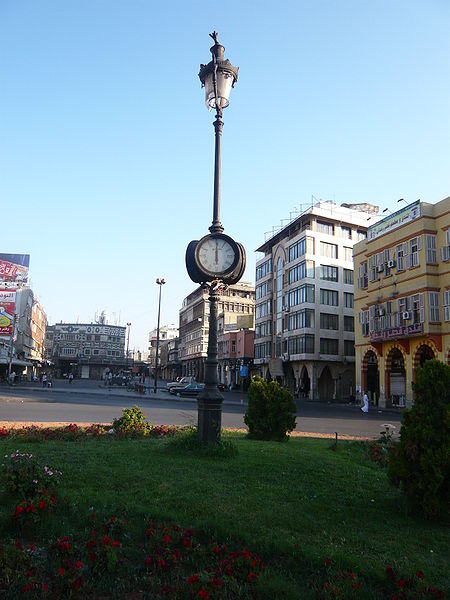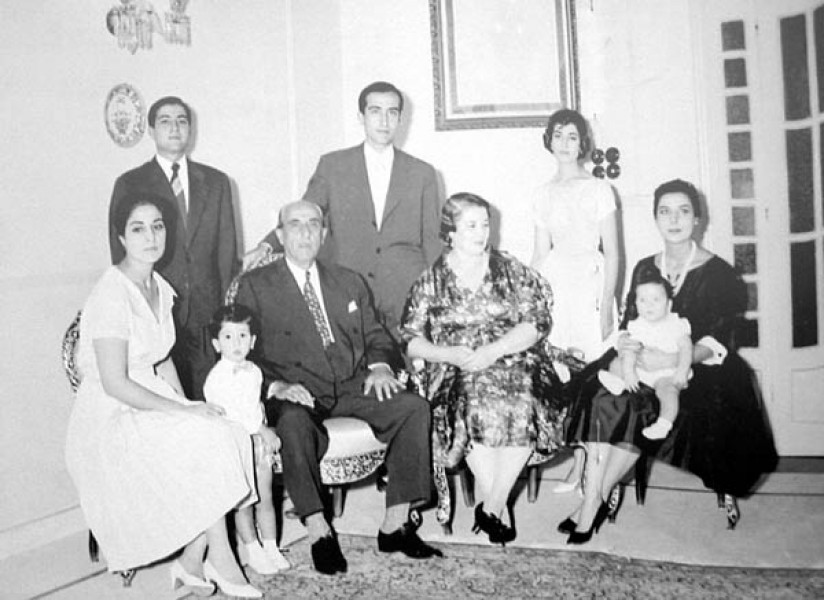|
Quwatli Street (Homs)
Shoukri al-Quwatly Street or simply Quwatly Street ( ar, شارع القوتلي) is the main street of central Homs, Syria. The street is a short, but wide strip of road with a large roundabout at both ends. Central Homs lies on either side of Quwatli Street, named after former Syrian president Shukri al-Quwatli Shukri al-Quwatli ( ar, شكري القوّتلي, Shukrī al-Quwwatlī; 6 May 189130 June 1967) was the first president of post-independence Syria. He began his career as a dissident working towards the independence and unity of the Ottoman Emp .... At its eastern end is the Great Mosque of al-Nuri and Martyrs' Square where the Old Clock of Homs stands, while the New Clock Tower is located at its western end. Much of the street itself is lined with buildings for accommodation, low-price hotels, eateries, coffeehouses, and other venues, as well as the city museum.Carter, 2004, pp.156-159. References Bibliography * Streets in Homs {{HomsSY-geo-stub ... [...More Info...] [...Related Items...] OR: [Wikipedia] [Google] [Baidu] |
Homs
Homs ( , , , ; ar, حِمْص / ALA-LC: ; Levantine Arabic: / ''Ḥomṣ'' ), known in pre-Islamic Syria as Emesa ( ; grc, Ἔμεσα, Émesa), is a city in western Syria and the capital of the Homs Governorate. It is Metres above sea level, above sea level and is located north of Damascus. Located on the Orontes River, Homs is also the central link between the interior cities and the Mediterranean coast. Before the Syrian Civil War, Homs was a major industrial centre, and with a population of at least 652,609 people in 2004, it was the third-largest city in Syria after Aleppo to the north and the capital Damascus to the south. Its population reflects Syria's general religious diversity, composed of Sunni and Alawite Muslims, and Eastern Christianity, Christians. There are a number of historic mosques and churches in the city, and it is close to the Krak des Chevaliers castle, a World Heritage Site. Homs did not emerge into the historical record until the 1st century BCE a ... [...More Info...] [...Related Items...] OR: [Wikipedia] [Google] [Baidu] |
Syria
Syria ( ar, سُورِيَا or سُورِيَة, translit=Sūriyā), officially the Syrian Arab Republic ( ar, الجمهورية العربية السورية, al-Jumhūrīyah al-ʻArabīyah as-Sūrīyah), is a Western Asian country located in the Eastern Mediterranean and the Levant. It is a unitary republic that consists of 14 governorates (subdivisions), and is bordered by the Mediterranean Sea to the west, Turkey to the north, Iraq to the east and southeast, Jordan to the south, and Israel and Lebanon to the southwest. Cyprus lies to the west across the Mediterranean Sea. A country of fertile plains, high mountains, and deserts, Syria is home to diverse ethnic and religious groups, including the majority Syrian Arabs, Kurds, Turkmens, Assyrians, Armenians, Circassians, Albanians, and Greeks. Religious groups include Muslims, Christians, Alawites, Druze, and Yazidis. The capital and largest city of Syria is Damascus. Arabs are the largest ethnic group, and Mu ... [...More Info...] [...Related Items...] OR: [Wikipedia] [Google] [Baidu] |
The Old Clock
''The'' () is a grammatical article in English, denoting persons or things already mentioned, under discussion, implied or otherwise presumed familiar to listeners, readers, or speakers. It is the definite article in English. ''The'' is the most frequently used word in the English language; studies and analyses of texts have found it to account for seven percent of all printed English-language words. It is derived from gendered articles in Old English which combined in Middle English and now has a single form used with pronouns of any gender. The word can be used with both singular and plural nouns, and with a noun that starts with any letter. This is different from many other languages, which have different forms of the definite article for different genders or numbers. Pronunciation In most dialects, "the" is pronounced as (with the voiced dental fricative followed by a schwa) when followed by a consonant sound, and as (homophone of pronoun ''thee'') when followed by a ... [...More Info...] [...Related Items...] OR: [Wikipedia] [Google] [Baidu] |
Shukri Al-Quwatli
Shukri al-Quwatli ( ar, شكري القوّتلي, Shukrī al-Quwwatlī; 6 May 189130 June 1967) was the first president of post-independence Syria. He began his career as a dissident working towards the independence and unity of the Ottoman Empire's Arab territories and was consequently imprisoned and tortured for his activism. When the Kingdom of Syria was established, Quwatli became a government official, though he was disillusioned with monarchism and co-founded the republican Independence Party. Quwatli was immediately sentenced to death by the French who took control over Syria in 1920. Afterward, he based himself in Cairo where he served as the chief ambassador of the Syrian-Palestinian Congress, cultivating particularly strong ties with Saudi Arabia. He used these connections to help finance the Great Syrian Revolt (1925–1927). In 1930, the French authorities pardoned Quwatli and thereafter, he returned to Syria, where he gradually became a principal leader of the Na ... [...More Info...] [...Related Items...] OR: [Wikipedia] [Google] [Baidu] |
Great Mosque Of Al-Nuri (Homs)
The Great Mosque of al-Nuri ( ar, ٱلْجَامِع ٱلنُّورِي ٱلْكَبِير, al-Jāmiʿ an-Nūrī al-Kabīr) also called al-Nouri Mosque, is a mosque in Homs, Syria. It is situated off ash-Shouhada street, adjacent to the city's historical roofed '' souqs'' ("markets"). History Originally, under the Roman Empire, the Great Mosque was the site of the city's pagan temple for the sun god ("El-Gabal"). The temple gained Emesa (Homs) prominence in the region as an important center of paganism and one of its priests, Elagabalus, became Emperor of Rome. El-Gabal's temple was paid tribute by Aurelian after he attributed his victory of Zenobia to the deity.Mannheim, 2001, pp.205-206. Later during the Byzantine phase of the Empire, the temple was converted into a church dedicated to Saint John the Baptist during the reign of Theodosius I as part of Christian persecution of paganism. After the city was conquered by the Muslims, one-fourth or half of the church was transfor ... [...More Info...] [...Related Items...] OR: [Wikipedia] [Google] [Baidu] |

.jpg)
.png)
